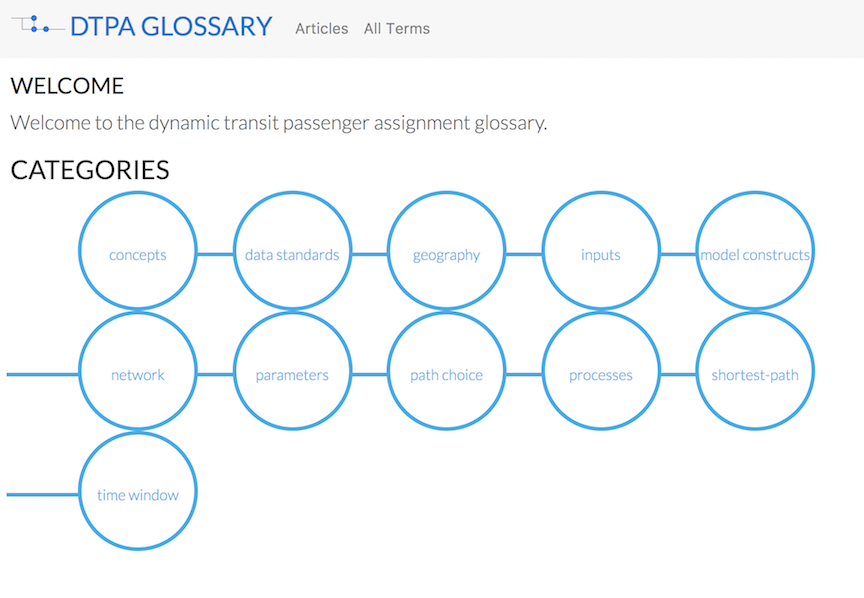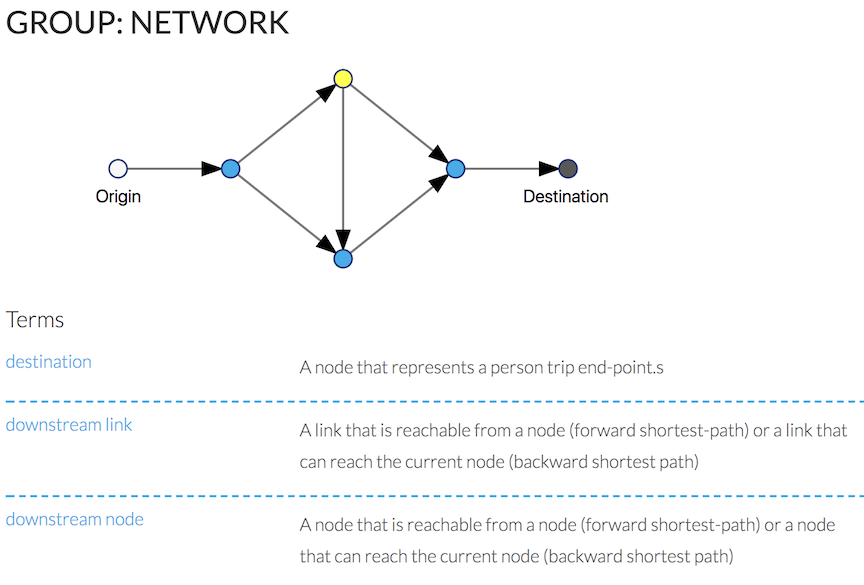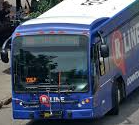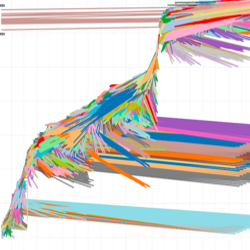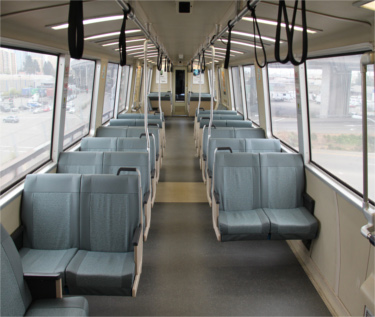We thought it would be useful to let people know sooner rather than later about three resources that we’ve been developing as a part of this project in order to promote a broader and more in-sync understanding of dynamic transit passenger assignment:
- A glossary of terms for describing Dynamic Transit Passenger Assignment,
- Lecture notes and teaching materials, and
- Interactive tutorials using open-source software.
While not perfect nor entirely complete, we hope that they are useful to a few different audiences:
- Consultants or agencies who may be interested in dipping their toe in and seeing what is there,
- Researchers who need to coalesce around terminology, and
- Academics who may be interested in providing an introduction to the topic.
DTPA Glossary
The DTPA Glossary was developed at the suggestion of Natalia Ruiz Juri at the University of Texas at Austin Network Modeling Center. When she participated in a review of our project in 2017 she noted how much the DTA Primer had done to promote a more broad understanding of DTA. While dynamic transit passenger assignment is not nearly as far along as DTA was at the creation of the Primer, she suggested a glossary of terms as a first step towards developing a shared understanding.
It was developed collaboratively first from within the project team, then more broadly via solicitations on the TMIP listserv and ResearchGate. We welcome feedback, suggestions, corrections, contributions, and debate on the glossary and hope that it can be a common resource for the community. It is anticipated that it can grow from a glossary to a more comprehensive resource similar to the DTA Primer.
Lecture Notes
We have a class-worth of lecture notes developed by Alireza Khani, the original FAST-TrIPs developer and an Assistant Professor at the University of Minnesota. We are in the process of developing datasets within the Fast-Trips open source dynamic transit passenger assignment model code base so that the problems and assignments can be run and analyzed in real-time. We are also going to translate the notes from PDF to a Jupyter notebook where the problems can be run from within the notes.
Tutorials
We unveiled a series of five initial tutorials at the TRB Planning Applications Conference in Raleigh, NC and hope to expand them over time. The tutorials use the open-source Fast-Trips software which can be used on any Windows, Mac or Linux computer.
We hope that these materials will be useful to the community and look forward to working with anybody who wants to help expand and improve upon them.
» Read More
